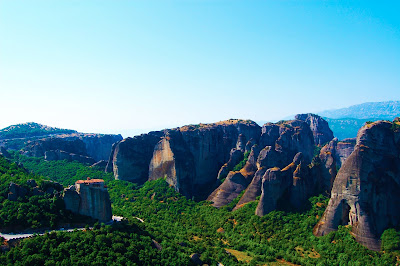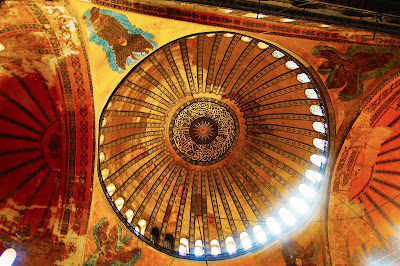 |
| Monument dedicate to King Leonidas at Thermopylae |
 |
| The Pass of Thermopylae |
So (for those who don't know) here's the history:
During the Persian Wars (ie Greco-Persian), the Persians were flying through Greece, taking cities all through the Aegean Coast. The Greeks (now including Athenians and Spartans), met the Persians at Thermopylae, meaning hot gates in Greek due to the pass the mountains naturally formed as well as the hot springs in the area.
The Greeks were heavily outnumbered, but the Greeks were on homeland. However, a traitor told the Persians about the pass and the Persians were able to cut through and surround the Greeks.
At this point, the Greeks foresaw their defeat. King Leonidas (of the Spartans) began telling all of the Greeks to return to their hometowns to defend them from the invading Persians. While some obeyed their orders, others (about 300) decided to say with Leonidas to fight to their deaths. Thus the entire plot line of the movie 300, sorry for the spoilers.





















































